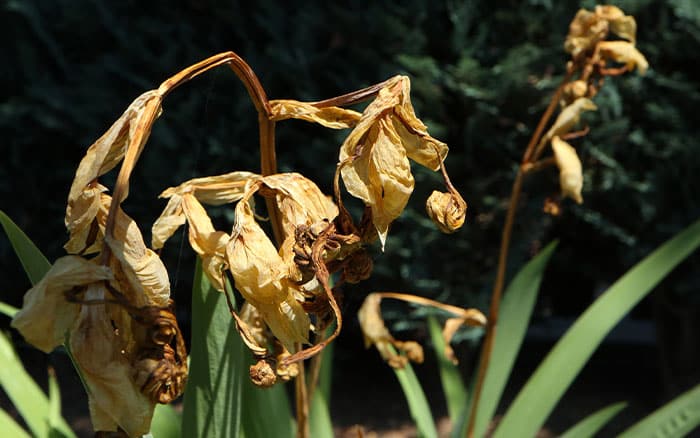Though British weather is at times unpredictable, the summer often brings with it a heatwave in which our gardens can get a bit thirsty. So how can you help your plants to get over the stress of heat when the sun is beating down?
Spot the signs
There are a few ways to tell if your plants are suffering from heat stress, and it may vary depending on the plant. For example, tomato and corn plants can roll their leaves as a response to the scorching temperatures. This happens because the surface area is reduced in a way to minimise moisture loss.
Another tell-tale sign is wilting. This is a common symptom in non-woody annuals and perennials, but the good news is they usually recover when the temperature decreases. However, if the heat is ongoing and they have wilted for a long period of time, this will increase the chance of permanent damage.

Large leaved plants such as squashes and pumpkins may show signs of dry edges. With this, the outer edges of the leaves will be dry, but the inner section will stay normal.
Heating up
When high temperatures are consistent, some plants will drop buds or flowers. This is common in cucumbers, peppers, and squash. But usually, when temperatures drop again, normal production resumes.
For cool season veg like broccoli, cauliflower, lettuce and spinach, high temperatures can lead to bolting. Bolting is when the plants flower prematurely and put energy into producing seed.

Therefore, keep an eye on the weather because it may be worth harvesting these crops when a heatwave is on the horizon for the best flavour.
Fruits can become scalded by the sun in high temperatures when exposed. This can happen to fruits like tomatoes, apples, and melons. Though it looks different on different fruits, it can give the appearance of a watery or blistered area on the fruit, or even look dried out or hardened.
Stay cool
Of course, watering is a good way to help plants deal with the heat. It’s generally recommended to water early in the morning or in the evening once the sun has past its peak. In times of high heat, morning watering may be advised. However, if plants are wilted it’s ideal to water as soon as suitable so they don’t spend too long in the wilted state.
When watering it’s best to water deeply rather than shallow watering. This allows water to get down into the roots rather than just staying at surface level.

Mulching matters
Mulching is an effective way or suppressing weeds as well as retaining moisture into the soil. It slows evaporation and helps to keep the soil at a consistent temperature rather than fluctuating up and down.
Therefore, it’s helpful to mulch plants, especially shallow rooted and young ones that will be more likely to face damage if the top of the soil is hot and dry.

Shady characters
Another useful thing to do is move containers into a shaded spot. Alternatively, give temporary shade with a parasol or umbrella in the morning by putting it up in late morning and taking it down near the end of the day so the plants still have access to some sunlight.


Leave A Comment